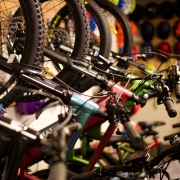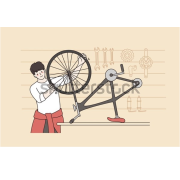You’ve Purchased an E-Bike?
What am I supposed to do once You’ve Purchased an E-Bike? Well…. If you’re reading this post then odds are that you’ve bought an E-Bike. Congratulations! Now you’re wondering what to do in order to preserve this investment into a cleaner, greener way of getting around. Here, We’re going to cover all of the basic things you should be doing with your E-Bike once you’ve made your purchase. This ranges from registering it with your supplier and insider tips that will help make your bike last longer. With that being said. Let’s get straight into it.
Registering Your E-Bike
Most E-Bike Suppliers in New Zealand tend to get you to register your E-Bike after purchased so you can activate your warranty, keep track of your servicing history and/or give you access to exclusive deals and promotions. This is incredibly helpful for keeping repair costs down if something does happen (As rare as this may be). And on top of that it is so much easier to do than you think. Here’s the simplest way to do this.
Things you will need to register your E-Bike:
The Serial Number, a valid E-Mail Address.
- Search for your suppliers website online
- Look under the sub-headings of the website and select either “Register” or “Warranty”
- Follow the websites instructions
- Done
Now I’d like to say that these instructions aren’t an exact science, but just a rough guide. If you’re still having issues with registering your E-Bike then there could be one of the following reasons that explains why.
- Your E-Bike supplier doesn’t need you to register it.
- If it is a second-hand E-Bike, It doesn’t need registering (or it’s already been registered by the previous owner).
- The Serial Number is incorrect.
Insider Tips
There’s a couple tricks of the trade that some stores might forget to tell you on the day of purchase. So we’ll just put them here so you know how to keep your bike in tip top shape.
Tip 1: Keep your battery charged. Yet every 3 Months try and ride your bike until your battery is flat.
This needs a little bit of explaining, but it will make sense. E-Bike Batteries are Lithium-Ion based which means they like to be in a charged state. But you should drain your battery ASAP after your purchase. This is because your battery has a BMS (Battery Management System). Due to your battery being brand new, it hasn’t been properly used yet, meaning we need to calibrate the BMS by simply draining its charge and recharging the battery back to 100% . This will prolong the life of your battery by making sure the BMS is calibrated every 3 months. So in other words… Ride your bike at least once every 3 Months so you can drain the battery to recharge it fully. This helps to prolong the life of your battery.
Tip 2: Plan a Servicing schedule and when you want to service your bike.
Your E-Bike (Just like a car) needs regular maintenance and servicing otherwise it won’t perform as it should after enough time. Luckily our suppliers give you lengthy warranties on all parts. And we’ve made up a full servicing plan to ensure that your bike stays healthy throughout your bikes warranty. Here’s how often to get your bike serviced.
Your 1st service should be between 200-500km mark (Some bikes come with a free service before 500km, count this as a 1st service as your bike is still very new and normally just serves as an inspection, however it’s good for spotting manufacturer errors that aren’t as obvious). Your second service should be around the 1000km mark. On the second service it’s easy to point out how quickly or slowly your consumable parts (Brake pads etc.) are wearing out. From that point onwards you want to get your bike serviced every 1000kms. This way, your bike will stay in top condition and your warranties will stay valid. As they are subject to servicing and can affect any claims. We also have servicing packages that make your ebike cheaper to maintain in the long run
Servicing Plans we offer to Our Customers:
1st Service – $50 (Valid between 200-500km odo)
2nd Service – $50 (Valid until 1000km)
3rd Service – $100 (Recommended at 2000km)
4th Service – $100 (Recommended at 3000km)
5th Service – $50 (Valid until 4000km)
MeloYelo
1st Service – Free (Valid between 200-500km odo)
2nd, 3rd and 4th Service – $100 Each (Recommended at 1000km, 2000km and 3000km)
5th Service – $50 ( Valid until 4000km)



